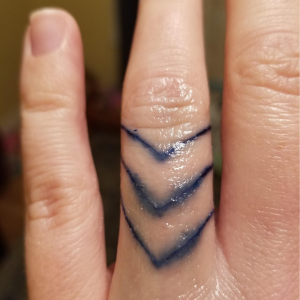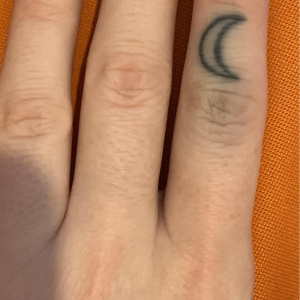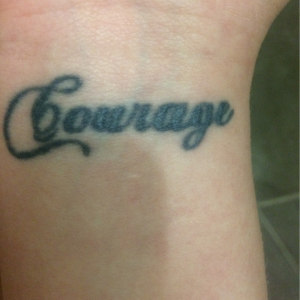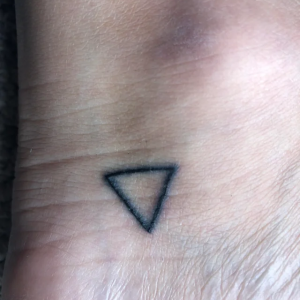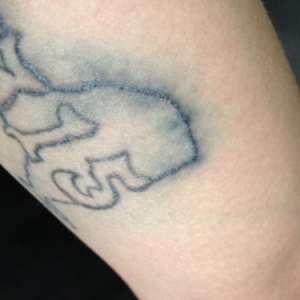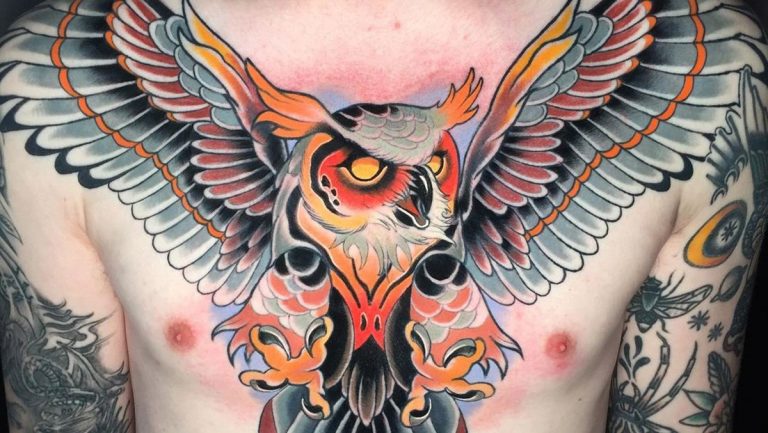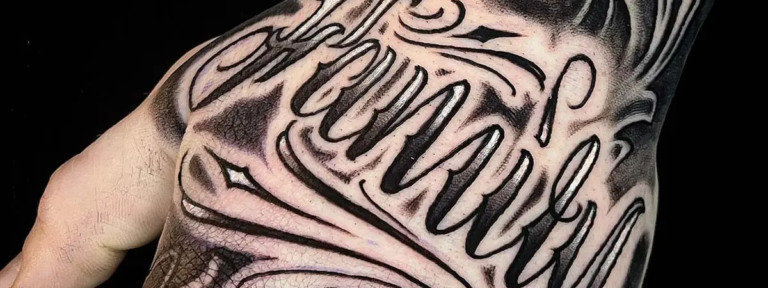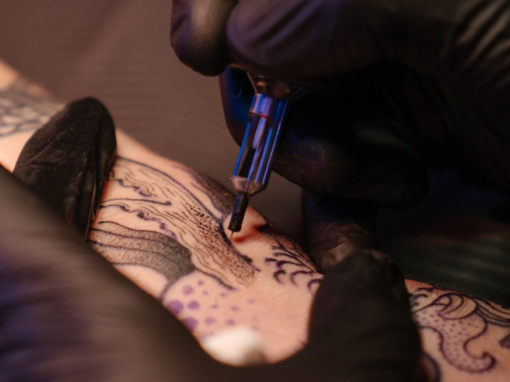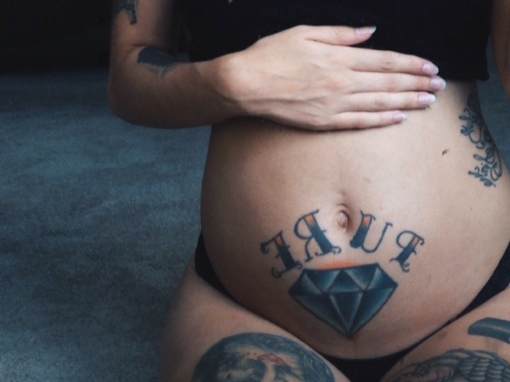For many people, a tattoo is a dream come true. Someone is saving money, spending a lot of time choosing a sketch, solving health problems to sign up for a session, and decorating his body with the desired pattern. It is a pity when, after some time, your tattoo becomes blurry, and the picture merges into an incomprehensible muddy spot without outlined contours.
This issue is most probably a tattoo blowout. It happens when the ink enters the fat tissue instead of the skin. What should you do with such an unpleasant development, and how can you avoid it? We explain it below.
What Is a Tattoo Blowout?
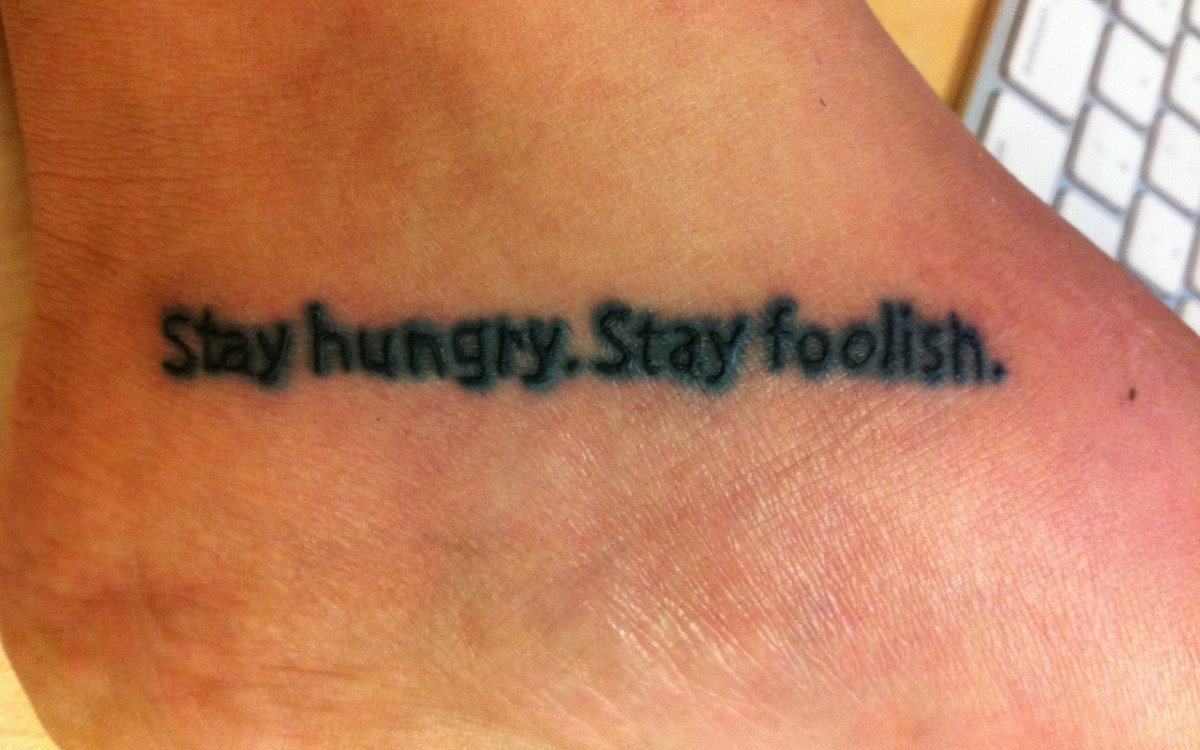
Tattoo blowout occurs when the artist presses hard on the machine and the paint gets too deep into the skin. It penetrates immediately into the fat layer and spreads out there instead of getting fixed in the dermis. This creates the blur that is associated with a tattoo blowout.
Examples of Blowouts
Tattoo blowout doesn’t look very nice, but before we get to the pictures, we want to reassure you: there are options for every case to fix it, and you won’t be walking around with a blurry tattoo for life.
Causes of Tattoo Blowout
As we mentioned, the main cause of a tattoo blowout is the needle getting into the fat layer (the subcutaneous tissue) of the skin instead of the dermis (the middle layer of the skin). This may happen because the tattoo artist is inexperienced or because a client’s skin is too thin.
Another popular reason for blowouts is when tattoo artists incline a machine too much. As you may know, tattoo artists can incline a machine to get darker lines, but if they incline it too much, the lines will get blurry, leaving a trace of a needle.
The causes below are the most popular; however, there are others. Let’s explore the other causes, dividing them by the ones connected to a tattoo artist and a client.
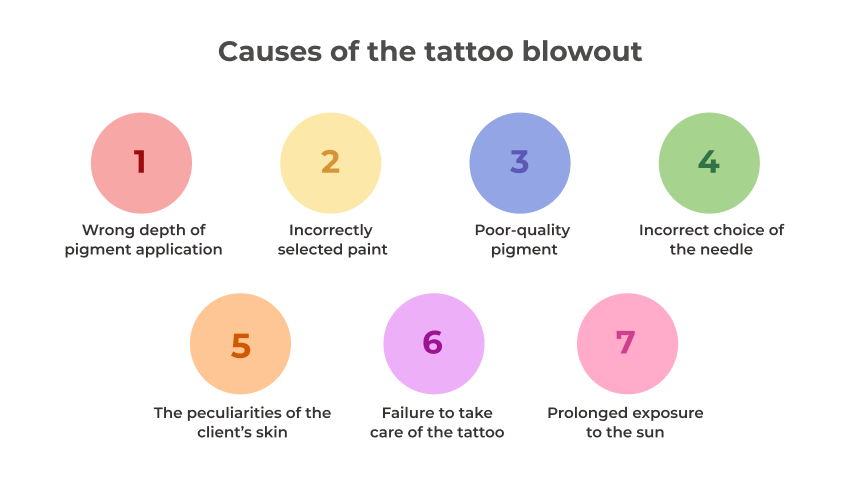
Causes related to the tattoo artist
- Wrong depth of pigment application. A real professional feels the vibrations formed by the machine needle with his fingertips and focuses on their strength to bring the pigment into the layers of the skin where it can be most firmly fixed. An amateur is not aware of such nuances, he wants to do it quickly and earn more, and therefore it is not about any feelings “at the fingertips.” As a result, the paint is not fixed in the dermis layer. Part of it comes out, and part of it is blurred, turning into a blot.
- Incorrectly selected paint. Yes, each pigment is used for a specific task. One is used for contouring, while the other is used for tousling.
- Poor-quality pigment. It may not be that you are using the wrong pigment, but it is simply not of the right quality. Chinese paints are beloved by “basement” craftsmen because they are cheaper than branded products. Manufacturers of these pigments rarely observe any safety requirements, use the cheapest components, and ignore the requirements for the size of the coloring particles, so the result here is appropriate. Someone goes further and makes his paint based on ink or gel paste. In that case, a blurry outline may not be the worst option. Sometimes it can cause allergy or even an infection.
- Incorrect choice of the needle. The contour is beaten with needles of a certain diameter. Outwardly, they resemble needles, unlike their stroking counterparts, which are between a comb and a brush. Incorrect choice of the needle or the use of the wrong type will provoke trauma, and damage the layers of skin, because of which the pigment will not be able to fix and will spread.
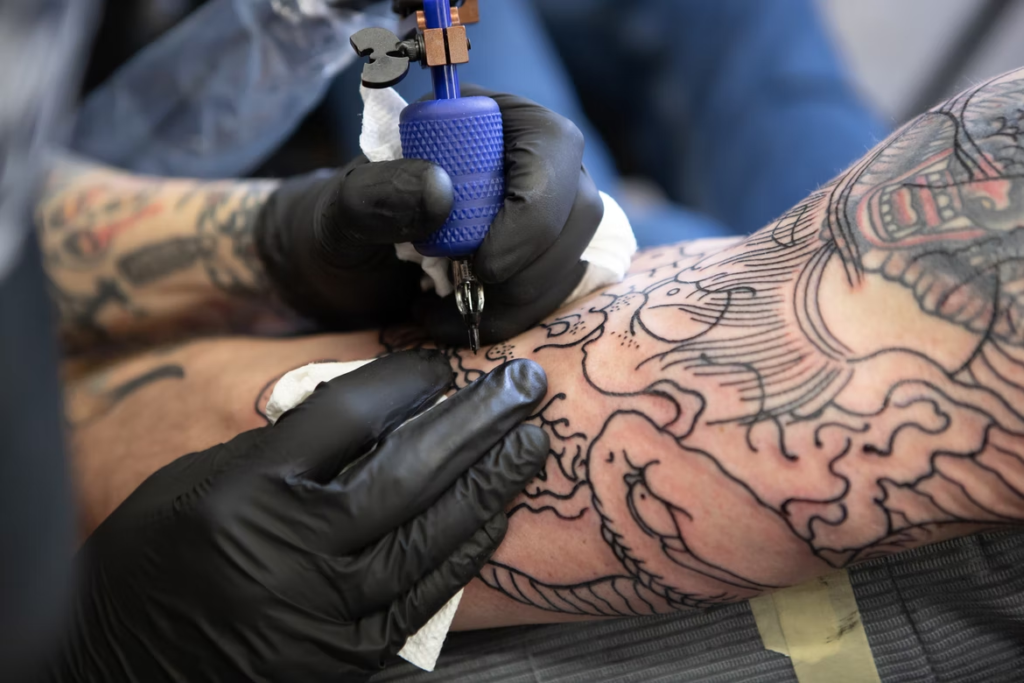
Causes related to a client
Despite all this, it is not always the master’s fault if the tattoo floats. Several other reasons depend directly on the client.
- The peculiarities of the client’s skin. The owners of thick, dense skin can be called lucky in this sense. In 99% of cases, they have no problems with the clarity of the pattern. Thin-skinned tattoo fans are less lucky. The thinner the dermis, the thinner the main “fixing” layer, and the higher the probability of pattern distortion.
- Failure to take care of the tattoo. Have you been exercising, didn’t apply to regenerate ointment in time, taken alcohol, or rubbed a fresh pattern with a washcloth? Then don’t be surprised if the contours have faded. Some of the above are directly mechanical effects, and some lead to increased blood pressure and active mixing of blood with pigment, which either comes out or loses stability.
- Prolonged exposure to the sun. Ultraviolet light is the main enemy of paint. It not only reduces the original color saturation but can also provoke the destruction of the structure with loss of contour.
Note that tattoos formed with small details can also float. In general, there is a direct correlation here. The finer and thinner the pattern, the more likely it is to blur. Owners of works in styles like Dotwork, Celtic with its finest ligature, and realism with abundant details should be most attentive.
How To Fix Tattoo Blowout?
We figured out why the tattoo is floating, but what to do in this situation? There are three basic ways to deal with a blurred tattoo. They include tattoo correction, laser correction, and surgical removal. Let’s look at them in more detail.
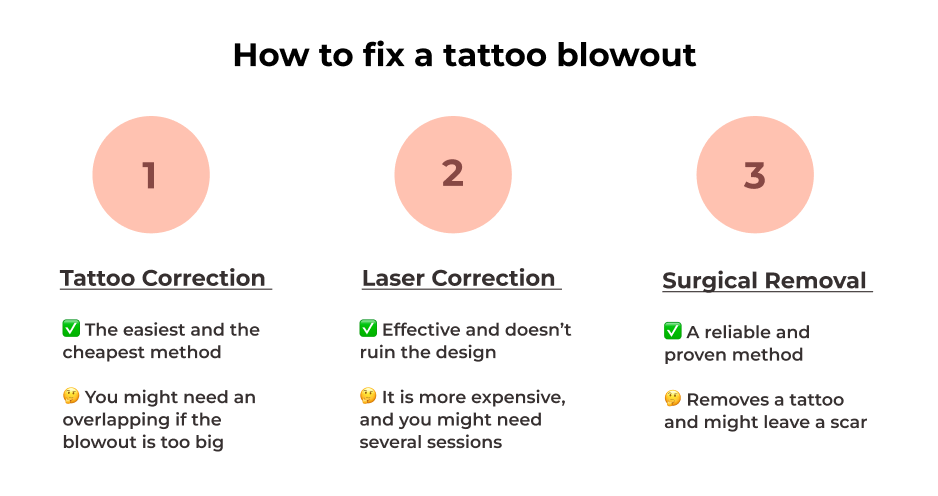
Tattoo Correction (a cover-up)
The most appropriate option is a correction. If the outline is not too badly blurred, it is quite possible to fix it, and the attractiveness of the appearance will be returned in full. No traces of the old drawing being deformed will be visible. This service is not too expensive and is done quickly.
A more dramatic solution is overlapping. A new pattern is made over the old one. This method is chosen either because of too strong deformations or because of the impossibility of correction when an old image contains too many small elements. The skillful master of the salon can perform overlapping of even a large color tattoo so that there is no trace left of it. Yes, the service is quite expensive, but the result justifies the expense.
Laser Correction
Laser correction is beneficial because it can reduce the appearance of blurriness while leaving the tattoo itself unchanged. A powerful stream of directional light destroys the pigment and it naturally leaves the body. The tattoo blowout gradually gets lighter and then disappears altogether. There are no burns and no damage to healthy neighboring layers of skin. The only disadvantage is that the larger the pattern, the more sessions you have to go through.
In addition, this procedure can cost you more than covering the tattoo, and it is not covered by insurance. The price depends on the size, color, and age of your tattoo. The average tattoo blowout removal costs about $420 in the United States.
Surgical Removal
Surgical tattoo removal is the most serious tattoo blowout removal option (along with the tattoo itself). You go directly to the surgeon, who performs the surgery and removes the part of the skin where you have the tattoo. Then he sews up the remaining skin.
It doesn’t sound very cool, but it’s a guaranteed way to completely get rid of a tattoo you don’t like.
❗As with the laser, health insurance usually does not cover payment for this procedure.
Is It a Blowout or a Tattoo Healing?

The picture may look a little floaty after 2-3 days of work. If the deformities are minimal, you do not need to worry. During this period, crusts begin to form. They completely come off over time, exposing the finished pattern. A small percentage of the pigment comes out with the crusts which leads to this visual effect of a blurred outline.
Do not worry! Continue to follow the rules of care according to the tips of the master, do not play sports, and most importantly, do not peel crusts! They will descend, and you will find your lovely tattoo under them, smooth and clear.
How to Prevent the Blowout?
It is necessary to puzzle over this issue even at the preparatory stage to avoid thinking about what to do if the tattoo floats. But it is worth understanding that following these recommendations will not give a hundred percent guarantee that the tattoo will not float, but only minimize it. So, the rule of three “C’s”:
- Choice of the master. Look for an experienced performer with a rich portfolio and positive reviews. The probability that this specialist will make any mistakes is small. In addition, he will be able to professionally advise you and save you from rash steps.
- Choice of the sketch. Avoid sketches with fine detail. These tattoos are almost always floating. If you listened to the past advice and found an experienced master, he will also warn you about this outcome.
- Care. Follow all the recommendations of your tattoo master. A negligent attitude to the stage of skin healing can bring a lot of problems, including a floating tattoo. Here you will be guilty of deplorable results.

Summary
Unfortunately, a tattoo blowout is not a rare case. But it’s not as terrible as it may seem at first glance. You can always get your tattoo corrected, remove excess pigment with a laser, or even surgically cut off the tattoo (although it is not advisable to go to extremes).
To avoid having to do any of the above, choose your master carefully and take care of your tattoo in the first weeks. This will reduce the risk of a blowout to a minimum.
Remember that even a professionally done tattoo will gradually need correction. The pigment lightens somewhat and floats a little over 5-10 years. This is quite normal. In such a situation we recommend making an appointment for correction, the expenses will not be considerable, but the tattoo will become noticeably “fresher”!
FAQ
? When Does a Tattoo Blowout Appear?
There are several reasons why a tattoo blowout can occur. The main one is the unprofessionalism of the tattoo master. He can hold the needle at the wrong angle, choose the wrong or low-quality paints for the outline, etc. But sometimes the problem is that the client’s skin is too thin or when he does not adhere to the rules of care for a fresh tattoo.
? Are Tattoo Blowouts Common?
Yes, tattoo blowouts happen quite often, although few people talk about it. The risk increases when you get very small tattoos (or tattoos with tiny details), as well as tattoos in places that are constantly exposed to mechanical impact (e.g. fingers).
?♀️ Does a Tattoo Blowout Go Away?
Sometimes what you think is a blowout is actually the healing process of the tattoo. In that case, you should stick to the advice of the tattoo artist and wait for the healing process to finish.
? How Do You Fix a Blown-Out Tattoo?
There are three basic ways to deal with a blurred tattoo. They include tattoo correction, laser correction, and surgical removal.
? Is a Little Tattoo Blowout Normal?
Yes, a little tattoo blowout is often not even noticeable if you do not look closely at the tattoo. Also, if you just got a tattoo, it may be part of the healing process and not a blowout.

